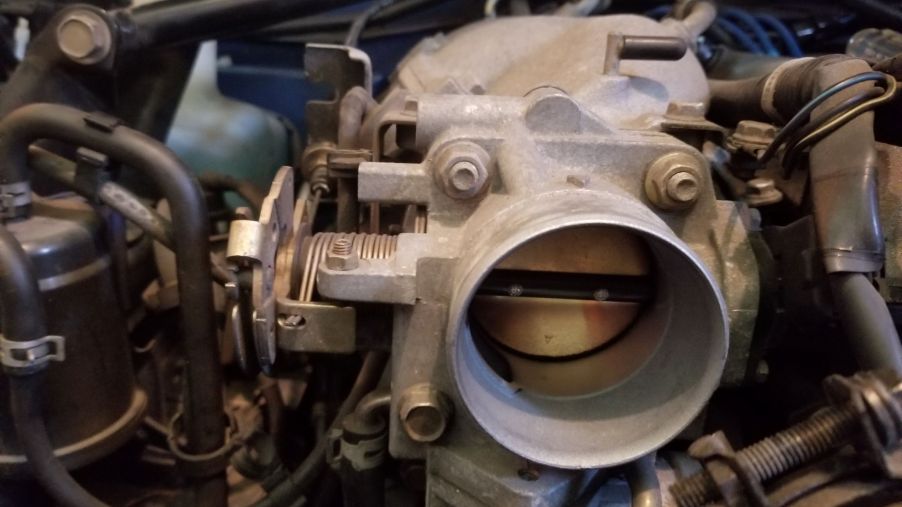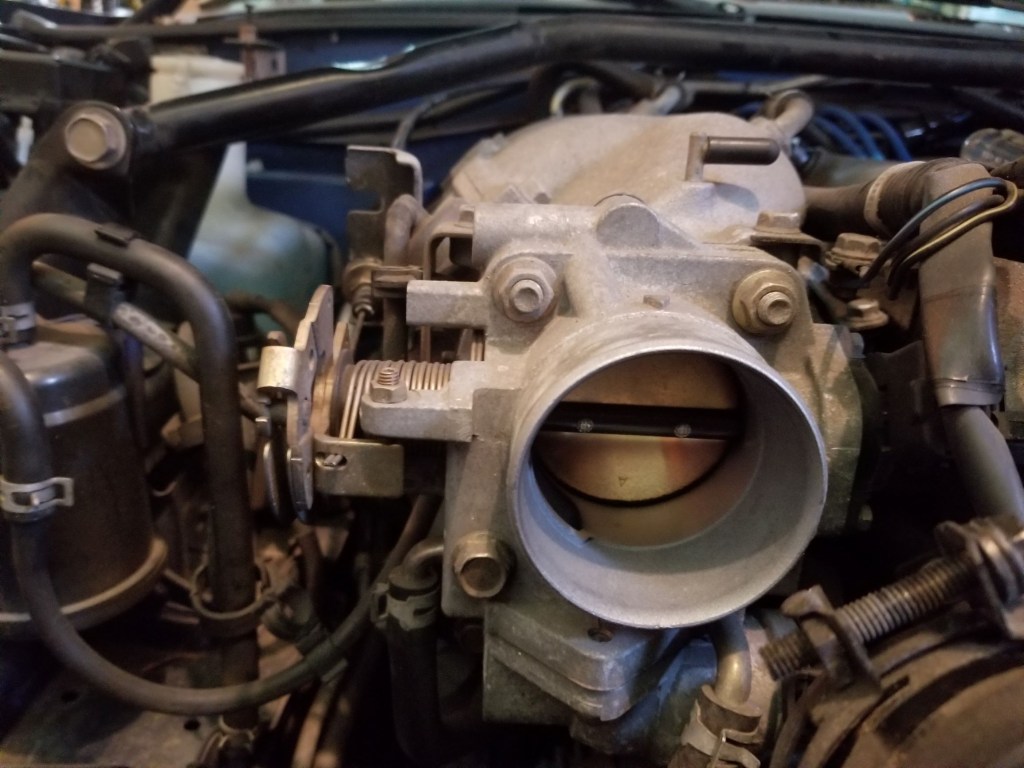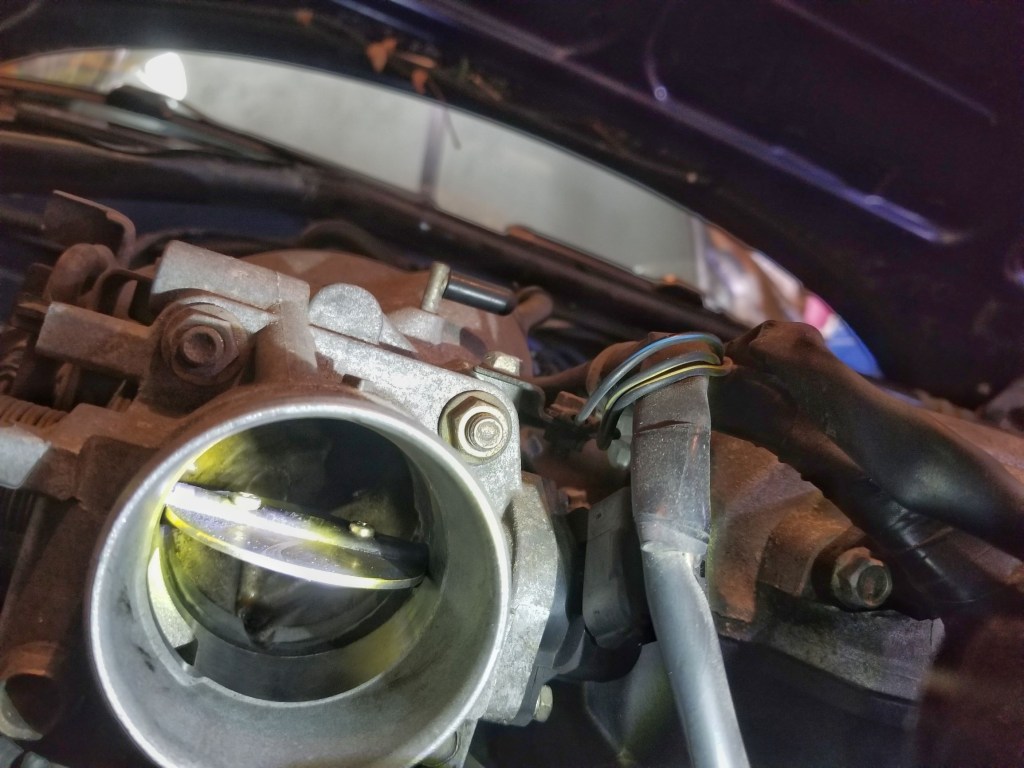
Your Throttle Body Could Use a Clean-Out
Time affects your car’s engine just as much as its body. That’s why the maintenance on higher-mileage cars doesn’t just stop at oil and air filter changes. Timing belts, spark plugs, ignition coils, head gaskets—these are just some of the things that need attention as the odometer climbs. One item that sometimes goes overlooked, though, is cleaning your throttle body. Luckily, it’s something you can do yourself.
What does the throttle body do?

For an internal-combustion engine to make power, it needs air. But before filtered air gets into the combustion chamber, it has to pass into the intake manifold via the throttle body. Or, in the case of some high-end performance cars, the air goes into the cylinders via several individual throttle bodies.
Your car’s throttle body is controlled via the throttle/accelerator pedal. In older models, like my 1999 Miata, the two are connected with a metal throttle cable. When you press down on the pedal, the cable pulls on the throttle plate, also known as a butterfly valve, Haynes explains. The valve opens, letting air into the combustion chamber, and your car moves. And when you ‘let off the gas,’ the cable goes slack, and the valve closes.
Modern cars, though, have throttle-by-wire, aka drive-by-wire throttles, Autoweek explains. Instead of a cable, there’s a position sensor and a tiny electric motor, GarageWire explains. The accelerator is connected to a sensor linked to the engine computer, Jalopnik explains.
Pushing the throttle pedal down sends a signal to the ECU, which simultaneously receives information from multiple other sensors. The ECU interprets all these signals and tells the throttle body servo-motor to open the plate a certain amount. And, as with the cable-operated one, when you step off the accelerator, the valve closes.
Why and when should you clean the throttle body?
Although the schedule and services provided in a car tune-up have changed, modern vehicles still need them. And often, tune-up services include cleaning your throttle body, Jalopnik reports.

While this can sound like another unscrupulous business trick, your throttle body can and does get dirty over time, CarTalk reports. Whether it’s because of ultra-fine external particulates, soot from fuel combustion, or general grime collection, it gets filthy. Eventually, the gunk builds up so much it restricts airflow, Motor explains.
You can tell when a throttle body needs to be cleaned, Autoblog reports. The trademark sign is a rough/unsteady idle. Your idle speed may also drop when you come to a stop, Autoblog reports, and potentially lead to an engine stall. I experienced this firsthand with my car. Other symptoms include the ‘Check Engine Light’ coming on and difficulties with shifting.
Some idling issues don’t necessarily stem just from overall throttle body dirtiness. The throttle body also contains the engine’s idle air control valve, The Drive explains. If the valve is clogged, the air-fuel mixture inside the engine is off. That leads to idling issues, starting issues, and even backfires. Some cars let you clean the IACV separately from the rest of the throttle body, Autoblog reports. However, it’s strongly recommended that you clean the whole thing every 75,000 miles, The Drive reports.
How to do it and what to watch out for
The cleaning procedure is fairly straightforward. All you need is a screwdriver, some throttle body cleaner, a toothbrush, and some paper towels.
First, disconnect the battery to prevent any electrical issues, Autoblog explains. Next, remove the air intake hose. Then remove any bolts, screws, hoses, and electrical connections going to it. After that, simply spray the throttle body cleaner liberally in a ventilated area, and use the toothbrush to gently scrub at any stubborn spots. Finally, wipe away any residue with the paper towels, and reinstall everything.
There is one thing to keep in mind before you start cleaning, though. If you have an electronic throttle body, do not move the throttle plate during cleaning. That can damage the servo-motor and lead you to buy a new throttle body.
However, if you have a cable-operated one, you can open and close the plate with relative impunity. And, technically, this means you can do a limited clean-out without actually removing it from the engine. Say, if you’re standing in an uninsulated garage in below-freezing Midwestern winter temperatures.
After you clean the throttle body, your engine may idle strangely for a bit as any leftover cleaner burns away. But after cleaning my Miata’s throttle body, its idle drop issue vanished. So, if your car has a rough idle, it may just need a clean-out.
Follow more updates from MotorBiscuit on our Facebook page.


